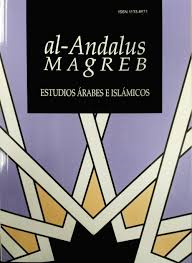Expressing best wishes in Arabic: room for pragmatic failure?

Información
Resumen
El objetivo del estudio es identificar fórmulas que se utilizan en árabe para expresar buenos deseos en ocasiones especiales tales como bodas o el nacimiento de un bebé. Estas expresiones se podrían dividir en dos categorías: expresiones formulaicas y fórmulas en forma de una oración para bendecir el acontecimiento. Los participantes de este trabajo son mujeres árabes de los países del CCG (EAU, Qatar, Baréin, Kuwait, Omán y Arabia Saudí), Siria y Palestina. Los datos se recopilaron en Abu Dhabi. El estudio también analiza las diferencias regionales entre estos países y se centra en las situaciones comunicativas en las que se podría producir un fallo pragmático. Este estudio tiene implicaciones pedagógicas no solo para los aprendientes de árabe sino también para los estudiantes árabes de lenguas extranjeras.
Palabras clave
Descargas
Cómo citar
Licencia

Esta obra está bajo una licencia internacional Creative Commons Atribución-NoComercial-SinDerivadas 4.0.
Aquellos autores/as que tengan publicaciones con esta revista, aceptan los términos siguientes:
- Los autores/as podrán conservar sus derechos de autor y garantizarán a la revista el derecho de primera publicación de su obra, el cuál estará simultáneamente sujeto a la Licencia de reconocimiento de Creative Commons que permite a terceros compartir la obra siempre que se indique su autor y su primera publicación esta revista.
- Los autores/as podrán adoptar otros acuerdos de licencia no exclusiva de distribución de la versión de la obra publicada (p. ej.: depositarla en un archivo telemático institucional) siempre que se indique la publicación inicial en esta revista.
- Se permite y recomienda a los autores/as difundir su obra a través de Internet (p. ej.: en archivos telemáticos institucionales o en su página web) una vez el manuscrito sea aceptado, lo cual puede producir intercambios interesantes y aumentar las citas de la obra publicada. (Véase El efecto del acceso abierto).
Citas
ABBOUD-HAGGAR, S. 2010. Introducción a la dialectología de la lengua árabe. Granada, Fundación El legado andalusí.
AL AHMAD, W. (2015). “Comparative study of courtesy expressions between Gulf Arabic dialects”, Master dissertation, Paris-Sorbonne University Abu Dhabi.
AL KHATEEB, S. (2009). The speech act of thanking as a compliment response as used by the Arab speaker of English-a comparative intercultural study. Master Dissertation in Applied Linguistics and Translation, An-Najah National University, Nablus, Palestine.
AL-SHURAFA, N. (1997). “A contrastive analysis of the linguistic politeness forms between two dialects of Arabic”, JKAU: Arts & Humanities, 10, pp.13-34.
ARMAN, M. and HALWANI, D. (2015). “A contrastive socio-linguistic research in compliments, compliment responses and expressions against the evil eye between Palestinian Arabic and Syrian Arabic”, Master dissertation, Paris- Sorbonne University Abu Dhabi.
DASTJERDI, H. V . and M. FARSHID (2011). “The Role of Input Enhancement in Teaching Compliments”, Journal of Language Teaching and Research, 2 (2), 460-466.
FARHA, H. (1991). Courtesy Expressions in Spoken Arabic. Beirut.
MIGDADI, F., BADARNEH M.A and KAWAKIB M. (2010). “Divine Will and its Extensions: Communicative Functions of maašaallah in Colloquial Jordanian Arabic”, Communication Monographs, 77(4):480-499.
MUGHAZY, M. (1999). “Pragmatics of the Evil Eye in Egyptian Arabic”. Retrieved from:
http://eric.ed.gov/ERICDocs/data/ericdocs2sql/content_storage_01/0000019b
/80/15/d2/c3.pdf
MURSY, A. A. and WILSON, J. (2001). "Towards a definition of Egyptian
complimenting" Multilingua, 20(2), pp. 133-154.
RAMAJO CUESTA, A. (2012). “El desarrollo de la competencia pragmática e
intercultural en aprendientes árabes de diversas variedades dialectales”,
Proceedings of the 23rd International Symposium of ASELE, pp. 736-747. RAMAJO CUESTA, A. (2013a). “Lengua y cultura en el aula de lengua. La adquisición de la competencia intercultural en aprendientes árabes de español”,
Proceedings of 24th International Symposium of ASELE, pp. 587-598. RAMAJO CUESTA, A. (2013b). “The importance of developing the intercultural and pragmatic competence of learners of colloquial Arabic”, Qatar
Foundation Annual Research Forum Proceedings: Vol. 2013, SSHO 03. RAMAJO CUESTA, A. (2015). “La cortesía verbal en árabe dialectal y su
aplicación didáctica”, PhD dissertation, Universidad Autónoma de Madrid. RAMAJO CUESTA, A. and AINCIBURU, C. (2015). “Transfer of Arabic formulaic courtesy expressions used by advanced Arab learners of Spanish”
Procedia Social and Behavioral Sciences, Elsevier, vol 173, p 207-213 RAMAJO CUESTA, A and YOUSEFIAN, S. (2015). “A contrastive study of Arabic and Persian formulas against the evil eye used by women”, Procedia
Social and Behavioral Sciences, Elsevier vol. 212, p 131-139.
SMITH, J.B (2009). The acquisition of pragmatic competence: compliment response strategies in learners of Spanish. PhD dissertation, Lousiana State
University.
VICENTE, A. 2008. “Génesis y clasificación de los dialectos neoárabes”. In: Manual
de dialectología neoárabe. Federico Corriente and Ángeles Vicente, eds. Zaragoza, Instituto de Estudios Islámicos y del Oriente Próximo, pp. 19-67.


